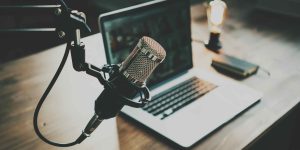-Haluan työskentelemään. En halua vastaanottaa toimeentulotukea Suomesta valtiolta. Näin kommentoi ulkomaalaistaustainen sosionomiopiskelija Omer, kun kysytään suunnitelmia valmistumisen jälkeen. Mediasta…
Tekijät | Authors

How to Sell Circular Economy Knowhow?
Circular economy is a new economic model in which consumption is based on using services (e.g. sharing, renting and recycling) instead of owning them. Thus, the model does not focus on producing more goods and the used materials are not destroyed in the end like they are in linear economy but are used to make new products over and over again. Additionally, the model takes social justice into account along with natural and technical circulations. Circular economy will not work until social sustainability is raised to the level of the ecologic and economic angles.
How to Sell Intangibles?
Environmental benefits, the need for circular economy and the advantages circular economy can offer are often hard to see and even harder to clarify for many of the stakeholders. The best sales proposition, of course, is the challenges we are facing in terms of our planet. David Brower from Patagonia, a global, well-performing company, has stated this very clearly (eGreenNet 2012):
There is no business to be done on a dead planet.
However, as we do not yet live on a dead planet, there must to be other sales propositions available. Terry-Cobo (2009) has listed the following four:
- Help your customers connect the dots.
- Encourage change by showing success stories.
- Illustrate that green is a spectrum.
- Talk to the right person.
At Turku University of Applied Sciences (TUAS), we have experienced this with the companies we cooperate with. These companies are wise and future oriented – they usually know where they are aiming for regarding circular economy. However, they do need a little help with connecting the dots in the middle of today’s hectic business life. In addition, we have noticed (Suominen et al. 2015; eGreenNet 2012) that examples by other companies are the best way to convince new companies of the importance of circular economy and other environmental business practices.
When it comes to point 3 in the above list, green really is a spectrum: there is so much to do, the little steps as well as major systemic chances. All steps are good. And as for point 4, it does pay off at companies to look for the right person to talk to, as usually there is a person or a group of people who are motivated by knowing they can help the environment through practical work that also benefits the company.
What Are We Selling at TUAS?
At TUAS, we do a lot of R&D in circular economy with companies.
We have plenty of ongoing projects in, for example, textile recycling, circular economy innovations and circular economy hubs.
Our operating method is strong enterprise–student cooperation, which is also in accordance with the principles of innovation pedagogy, an approach to learning and teaching developed at TUAS. The operations of our research group offer an interface for the needs of the enterprises operating in our region and for the process of training students into professionals. This way, we are constantly selling our circular economy knowhow and cooperation possibilities to companies.

Photo by Sara Malve-Ahlroth.
The Future of Circular Economy?
Circular economy is both a challenge and an enormous opportunity. Achieving long-term sustainable growth can only happen through partnership and cooperation. We need cooperation among suppliers, retailers, startups, governments, cities, universities, NGOs and consumers. (Suominen et al. 2015; Helias 2018)
The article was originally published in Journal of Excellence in Sales 2/2018.
REFERENCES
eGreenNet (2012). Environmental Business Can Thrive in All Sectors. Available at https://egreennet.turkuamk.fi/in-english/
Helias, V. (2018). Why the Future of Consumption Is Circular. Available at https://www.weforum.org/agenda/2018/01/future-consumption-circular-economy-sustainable
Suominen, J., Hillgren, E. & Nurmi, P. (2015). eGreenNet – ympäristöliiketoimintaa pk-yritysten kanssa. Available at http://julkaisut.turkuamk.fi/isbn9789522165664.pdf
Terry-Cobo, S. (2009). Selling Intangibles: How to Sell What the Customer Can’t See. Available at https://www.greenbiz.com/blog/2009/08/24/sellingintangibles-how-sell-what-customer-cant-see








